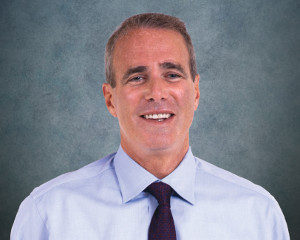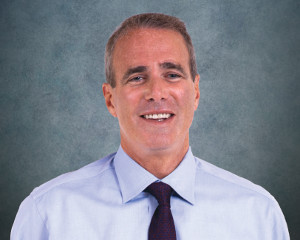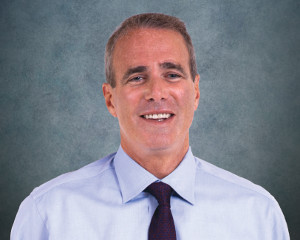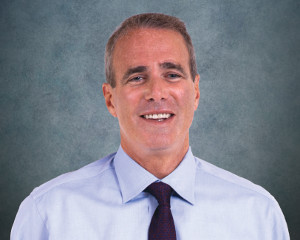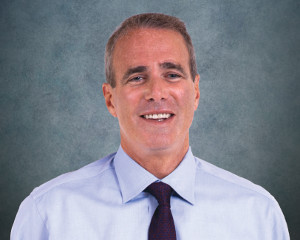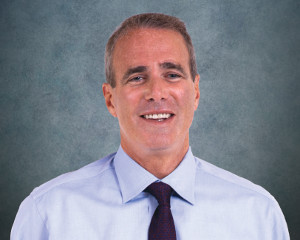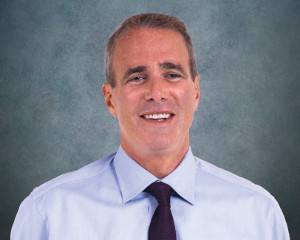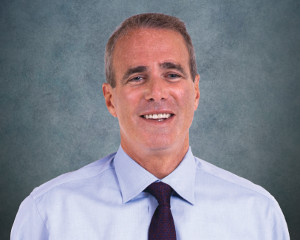I’ve been asked recently for benchmarks on closing ratios for dealers.
The frequency of the question, I suspect, follows the fundamental change in the way today’s new/used vehicle shoppers zero in on a potential purchase. As most dealers are aware, shoppers do the bulk of their homework and research online. On average, they visit fewer than two dealerships to ink their next vehicle deal.
This dynamic makes it ever-more important for dealers to make the most of the in-store opportunities that come their way. Statistically speaking, it’s a near-certainty that if the customer doesn’t say “yes” and buy your car, another dealer will get the deal.
I asked some top-performing dealers for their closing ratio stats to offer some number-crunched benchmarks:
Internet: 15 percent
Phone: 20 percent
Walk-in: 40 percent to 50 percent
Note: Some dealers rely a simpler closing ratio rule of thumb. They expect to close at least 50 percent of every showroom opportunity, irrespective of the source.
The dealers also shared an insight: More and more, their closing ratios depend on the consistent execution of customer-centric processes, rather than people you’d consider to be “closers.”
“Our sales process starts online with our listings,” a Colorado dealer says. “From there, our people follow a process that facilitates, rather than forces, customers to make their decisions. When everyone does their part, and follows the process, we keep more business than we let go.”
Dale Pollak is the founder of vAuto. These entries and Pollak’s entire blog can be found at www.dalepollak.com.
General Manager Todd Long dares to be different at O’Neill Honda in Kansas City.
Before he took the job in December 2013, Long mystery-shopped the competition. “It was the epitome of the ‘90s all over again,” he says. “Nobody’s outside. Nobody’s helping you. No manager TO. The MSRP is the price.
His findings convinced him of an opportunity to pursue a different, digital-focused strategy.
“We’re really trying to make our purchase process transparent, efficient and seamless,” Long says. “You make us an initial offer online. You deal with a product specialist, then you talk to a sales manager and you’re done. My whole deal behind this is, you get what you give.”
The centerpiece of Long’s digital strategy is the MakeMyDeal application, which allows potential buyers to self-direct the terms of their new/used vehicle purchase, financing and trade-in online. “It’s like Burger King. The customer’s calling the shots. Customers aren’t used to that, and it gives us an opportunity,” he says.
Long quietly launched this strategy in April, adding the MakeMyDeal icon to new/used vehicle listings on his website and AutoTrader. Since then, he’s sold six vehicles (three new/three used), all with better front-end gross profits than he typically sees from walk-in customers.
“I negotiated the first deal with two e-mails,” Long says. “The customer said ‘I’m done’ and came here 40 minutes later. He drove the vehicle and then went to F&I. We made $2,187 in gross on a used Dodge Ram. After the first one I was like, ‘Oh man. If I can get a hold on this and we can do this right, I think we’ve got a winner.’”
Why the higher grosses? “The experience lends itself to gross,” Long says. “It’s like buying water at a convenience store. You pay a lot more than you would if you bought four cases at Costco. But you pay the price because it’s convenient.”
With the early results, Long plans to aggressively market the MakeMyDeal-driven buying experience this month. He’s also refined the process to include delivering vehicles to customers at their home or office for a 24-hour test drive, and a personalized VIP welcome when they come to the dealership to complete the deal.
“Customers have been asking for years for a seamless online buying experience,” Long says. “We’re giving them a taste. We’re saying, ‘You’ve spoken. We’ve listened, and we want to do our best as a forward-thinking digital dealer to provide the experience you want.’”
Dale Pollak is the founder of vAuto. These entries and Pollak’s entire blog can be found at www.dalepollak.com.
There’s no question that dealers like packs.
But packs have become increasingly problematic for dealers, sometimes in ways they fail or refuse to see.
I recently asked a group of dealers to share how much they packed their used vehicles. The responses ranged from $0/per car to $1,200/car.
I then asked the dealers at the low and high end for additional details:
Average monthly volume: The $0-pack dealer sells 120 units per month, off an inventory of roughly the same number of vehicles. The $1,200-pack dealer averages 40 units per month, off a 90-vehicle inventory.
Average front-end gross: The $0-pack dealer typically sees a front-end gross average of $1,300/car (for a monthly average total of $144,000); the $1,200-pack dealer averages $2,800/car front-end (for a monthly average total of $112,000).
Average sales associate pay/production: The $0-pack dealer pays an average $275 flat for each sold unit ($300 for cars sold at asking price; $250 if they’re discounted), and sales associates average 15 cars/month (or $4,675/month). The $1,200-pack dealer pays a straight 25 percent commission off of gross (minus pack), or a $150 mini for no-gross deals. The sales associates typically sell 10 units, which usually includes an average of three mini deals (or $3,250/month). This dealership also pays $50 spiffs for selling aged cars and F&I sales, which the dealer estimates adds another $300 or so to a sales associate’s paycheck.
After running through these numbers, I went a little deeper. I asked about average sales team turnover. The $0-pack dealer might lose one, maybe two, sales associates a year; the $1200-pack dealer loses about half of his team.
With this comparative backdrop, I asked the group if they thought the dealer’s $1,200 pack might be crimping his ability to increase market share and sell more used cars.
Some dealers immediately said “yes.” They pointed to the dealer’s relatively low monthly sales volume, slower inventory turns and higher turnover as evidence that the $1,200 pack contributed to a less-than-optimal performance for the used vehicle department and dealership as a whole.
Other dealers cried foul. It wasn’t a fair comparison. The dealers had different markets and operating philosophies. Besides, even if things could be better, the $1,200-pack dealer has every right to “protect the house.”
I asked a follow-up question: If the two dealers were competing in the same market, which dealer would more likely enjoy a higher level of market share and overall profitability?
At this point, all the dealers in the group at least acknowledged that the $0-pack dealer would likely be selling more cars, and making a better return on investment.
I then shared the three reasons I believe packs create trouble for today’s dealers:
- Packs are a tax. By applying this tax, dealers effectively burden every car with additional cost. To offset the effects of the added cost on their front-end margin, dealers increase asking prices. By definition, this practice makes each unit less appealing to today’s price-conscious buyers. You can spot a high-pack dealer pretty quickly: Their used vehicles are often priced higher, and retail less quickly, than the competition. To me, these are symptoms of a dealer trying to collect a tax that is out of step with today’s market.
- Packs breed picky buyers and high pressure appraisers. I asked the group: Do you think buyers and appraisers might simply look past perfectly good retail units at auctions and trade-ins because the cars can’t absorb the pack and deliver a desired front-end margin? Is it possible you’re missing at least a few trades because packs cause appraisers to get too aggressive? The dealers agreed that the scope of either problem would directly relate to the size of the pack.
- Packs slow your inventory velocity. If a pack causes a dealer to miss inventory acquisition opportunities, or contributes to the consistent loss of half your sales team, the used vehicle department isn’t performing to its potential. The $1,200-pack dealer admitted that while he’d like to sell more than 40 used units a month, he’d come to believe the benchmark represented a “good job” in the department.
As we wrapped up the discussion, I asked the $0-pack dealer how he arrived there.
“It didn’t happen overnight,” he says. “When we started, I had a $1,000/car pack and cut it by $200. Our volume and total gross picked up right away. The rest is pretty much history.”
Dale Pollak is the founder of vAuto. These entries and Pollak’s entire blog can be found at www.dalepollak.com.
Some used-vehicle managers carry a double curse.
The first curse is their absolute focus on average front-end gross profit. They’ll say, “I can’t change this price because there won’t be enough front-end gross,” or, “I can’t buy this auction car because there won’t be enough front-end gross,” or, “I can’t offer the customer what their trade-in’s really worth because there won’t be enough front-end gross.”
The second curse is their inability to recognize that the front-end gross-focused inaction on each of the preceding scenarios ultimately hurts the performance of their used-vehicle department, as well as the size of their paychecks.
The used-vehicle managers who carry this double curse create an even bigger problem for their dealers — the less-than-optimal performance of their used-vehicle department ultimately saps the other dealership departments of their ability to maximize sales and profits.
Surprisingly, some dealers appear to be aware that their used-vehicle manager’s double-curse is hurting the overall dealership prospects, but they choose to do nothing about it.
How else to explain the disparities I see across dealer groups, where the performance of some stores — measured by the net impact of a strong used-vehicle department across their peer departments — completely outshine the others?
The difference, of course, is that the used-vehicle managers at the high-performing dealerships have effectively exorcised themselves of the double-curse, or they never suffered from it to begin with.
I understand the exorcism can be difficult, particularly for used-vehicle managers who have spent years in the business. Unfortunately, they’ve been carrying the double-curse for a long time, and every year makes it more difficult to remove.
Used-vehicle mangers who eliminate the double-curse have come to embrace three operational realities they previously failed to see:
First, it’s essential for used-vehicle managers to recognize that in today’s market, there’s often very little money left in a used-vehicle after you’ve owned it for 30 days.
This timeline has become even more critical in 2015 in light of increasing supplies of available used cars. I would encourage dealers to compare the average front-end gross profits of used-vehicle sales that occur in 15 and 30 days or less, against those that occur after the 30-day mark. (Note: I would ask that this be a full and honest accounting, that includes the holding costs associated with every car, irrespective of its sales date.)
Second, used-vehicle managers must align their inventory management and pricing objectives to retail a greater share of vehicles within the timelines that will maximize their front-end profit potential.
Inevitably, the managers will recognize that today’s market requires a balancing act between selling a car quickly to maximize its gross profit potential, and sacrificing some front-end margin to put the car over the curb fast and earn another retail opportunity.
This turn-and-earn mentality, which I call the Velocity Method of Management, is often counter-intuitive to the most die-hard, double-curse-carrying used vehicle managers. But, in the end, the math works — selling more cars more quickly will improve gross profits, even if front-end averages slightly diminish.
Third, as used-vehicle managers begin to retail more used vehicles in shorter timeframes, they begin to work on perfecting the throughput of their operations. They build alliances and understandings with their service directors that time is money in used-vehicle reconditioning.
Cars get fixed and front-line and online-ready in a matter of hours or days, not weeks. They continually work on ways to press down the costs of reconditioning, which builds front-end margin potential and greater efficiencies for both departments.
They measure and share the impact of their efforts throughout the dealership, showing financials that reveal double-digit lifts in sales and net profits throughout the dealership.
It’s this final step that often gets the dealer’s attention. They start to see positive improvements in the financials for every dealership department. In some cases, the more enlightened dealers take additional steps to make the total dealership gains an ongoing reality.
They measure and promote the positive impact the used-vehicle department creates across all dealership departments. The dealers might even change pay plans to recognize and reward the used-vehicle manager’s total dealership contributions.
As I mentioned, eliminating the double-curse isn’t easy. But I haven’t met a single used-vehicle manager who cured themselves, and now wishes they hadn’t.
Dale Pollak is the founder of vAuto. This entry and Pollak’s entire blog can be found at www.dalepollak.com.
A dealer recently took issue with my assertion that the used vehicle business has been suffering from margin compression.
“Dale, we’re averaging $1,400 per vehicle in front-end gross,” the dealer says. “That’s a little less than we made seven to 10 years ago, but it’s not a lot less.”
The dealer’s comment underscores what I’d consider a troubling misunderstanding of the harmful effects margin compression creates for dealers in used vehicles. You might even call it a “boogeyman” due to its lack of recognition for some dealers.
Here are two realities of margin compression dealers often overlook:
- The average cost of vehicles has increased. Edmunds.com reports that the average transaction prices for all used vehicle segments grew by nearly 6 percent in 2014, compared to the prior year. Analysts say the increase reflects the steady rise in new vehicle transaction prices, as well as market supply/demand factors. No matter the cause, the average cost dealers pay to acquire and retail used vehicles has gone up.
- The return on investment (ROI) on a per-car basis has declined. While dealers have been paying more to acquire and retail vehicles at higher transaction prices, the gross profit they earn has diminished. NADA stats show that front-end gross as a percentage of used vehicle transaction prices has declined 20 percent between 2009 and last year (from 10.7 percent to 8.6 percent, respectively). The end result is that dealers are investing more in each used vehicle, and seeing a lower return for the effort, risk and time required to retail each unit.
Both realities beg the question: Why doesn’t the dealer who challenged my assertion about margin compression recognize the harmful effects it creates for his business?
Part of the answer lies in the dealer’s emphasis on front-end gross profit. He’s still seeing roughly $1,600 per car, and doesn’t feel the effects of margin compression because he’s not looking at the big picture. I would bet good money the dealer would be less satisfied if his parts manager told him the store earned $20 for a $100 part and $20 for a $3,500 engine block.
In addition, the dealer, like many others, is selling more used vehicles. The stronger sales volume also helps mask the effects of margin compression.
I told the dealer he wasn’t alone in thinking that things were actually going pretty well in used vehicles, simply because the front-end gross dollars per car hasn’t changed much. I also shared three must-dos that I believe are necessary for all dealers to maximize the true potential of their used vehicle operations and minimize margin compression:
Pay close attention to your acquisition cost. Some dealers make it a day-to-day priority to monitor the average acquisition cost of their used vehicle inventory. They look at the average dollars spent per car, and the overall cost to market metric for their inventory. With this oversight, they notice right away when a buyer gets goo-goo and pays too much for an expensive car, or an appraiser puts too much into a trade. They start asking questions. They want good reasons why they buyer or appraiser effectively put the vehicle’s profit potential at risk. Such conversations, which are most effective when constructive rather than critical, tend to focus everyone’s attention the goal of pressing down costs to preserve front-end margin.
Hold your people accountable. It’s absolutely essential that buyers and appraisers understand the reality of today’s market—it doesn’t forgive when you over-pay for a vehicle. In addition to the conversations noted above, the best dealers keep a running tally of each buyer and appraiser’s ability to meet the dealership’s cost to market acquisition targets. Some dealers go further, and include this metric in pay plans, often as a bonus if the individual beats the benchmark.
Press down reconditioning costs. I like the way a Midwest dealer tackled this challenge. He sat down with his General Manager (GM), and the used vehicle and service managers. They reviewed 200 reconditioning repair orders, and itemized the top 25 most-frequently used parts used, the 10 most-frequent sublet jobs and the average effective labor rate. Next, the dealer conditioned monthly bonuses on the three managers working together to knock 15 percent off the cost of the parts, a 10 percent reduction in sublet costs and a 2 percent reduction in the effective labor rate. The dealer reports that these efforts have helped him generate an additional $200 per vehicle in front-end margin.
As our conversation wrapped up, the dealer said he understood the choice: He could either confront margin compression or go on believing it doesn’t exist or matter too much.
“You’re right, Dale,” the dealer says. “There is a boogeyman out there. We could and should be doing better than $1,600 per car.”
Dale Pollak is the founder of vAuto. This entry and Pollak’s entire blog can be found at www.dalepollak.com
Many dealers have toyed with the idea of a Business Development Center, or BDC. Some have implemented one, only to find it unsustainable within their operational strategy. Others did some mental math or thought out the logistics and decided against incorporating one under their roof. Still others have a fully staffed BDC in their store today. Regardless of which of these camps you find yourself in, the BDC, and in fact, your entire follow-up strategy could use a hard and long second look. Math and metrics aside, let’s evaluate what customers want and how to best give it to them.
Customers today know they have choices. They do plenty of research online, referencing upwards of 20 separate sources for information before deciding to visit a dealership. In fact, many customers don’t commit to visiting a location until they have had all their questions answered via a phone call or email inquiry. This means fewer prospects in your showroom, and more communication required by means you can’t see or manage at the desk. You need an easy to use CRM, and could consider call recording for training purposes. You need to know that the follow up to customers who have bothered to visit you is high quality and professional; that the emails sent are well written, timely, and answer the customer’s questions. Earning a customer’s business today demands a level of follow-up we have not customarily catered to in this industry before. Consider that your existing infrastructure may not be able to sustain a profitable BDC, but that your future market position demands the caliber of communication traditionally generated in one.
There are a few universal reasons why dealers don’t like to operate their own BDC.
■ Additional fixed overhead expense in the form of hardware, software licenses, employee costs and training.
■ The challenge of hiring, training, licensing and managing a team of customer service representatives in the unstructured dealership environment.
■ Inter-departmental politics and alliances which can cause headache and distraction when sales people interfere with the CSRs duty to remain objective and provide excellent care to every customer.
What if you could gain the benefits of a well trained, highly effective BDC without any of the challenges above? New product offerings from tried and true partners may offer you the opportunity to do just that. Taking a second look at outsourced solutions could yield the best balance of benefit versus commitment, while allowing your existing sales team to focus on their unique strength: guiding customers to a sale in the showroom.
Look for a vendor which offers cost-per-call follow-up services, and you can turn what was once an all year round fixed expense in to a seasonally-adjustable marketing expense that mirrors your rate of sale. Accepting that phone and email follow-up are separate skill sets, equal to but not often present alongside face-to-face closing abilities, can relieve your sales manager and sales representatives of a lot of pressure, without sacrificing the customer experience you want your prospects to enjoy. In short, let people do what they are best at, rather than doing ten things they are passably fair at. Eliminate the competition between the BDC and sales reps who are certain these “call center people” are stealing their customers, as well as the temptation to intercept the sales follow-up process by removing the BDC from your store altogether.
It may seem like a contradiction, but in today’s digitally driven world, with the resulting decrease in foot traffic, good old-fashioned phone follow-up is everything. Remember the inverse relationship between control and trust: customers don’t trust car dealers, and thus they do everything they can to avoid being controlled in the sales process, including avoiding voicing their objections to sale people. Take away the aspect of control and customers trust us more. Having an unbiased third party following up to make sure they enjoyed their experience serves this purpose, benefitting the customer and the dealer equally.
Cathie Clark has over 20 years of automotive industry experience, and is currently a dealer principal and president of Automotive Insider Consulting. Equal parts competitive car dealer and compassionate dealer educator, Cathie offers insight into digital and traditional marketing, F&I and sales processes as well as proactive compliance to improve customer experience. Reach Cathie on Twitter @autoinsidercat or at [email protected]
Most folks in the automotive industry are all too familiar with the monologue Alec Baldwin delivers to a disheartened sales team in the classic film, “Glengarry Glen Ross.”
During his speech, Baldwin shares the “ABC” philosophy — which of course stands for “Always Be Closing.” He then goes on to explain the sales competition for the month:
“First prize is a Cadillac Eldorado. Anybody wanna see second prize? Second prize is a set of steak knives. Third place is you’re fired.”
While this type of approach to sales (and running a business in general) might have made sense in the past, it is outdated, irrelevant and downright risky in 2015.
Having a website isn’t enough, much like buying a stock car won’t win you the Daytona 500. You need to create a great marketing strategy and build a powerful brand to be successful. Today, a more relevant philosophy might be “ABB” — Always Be Branding.
The biggest challenge most dealerships have today is getting more people into their showroom. Over 70 percent of the vehicle purchasing process happens online, and that’s why your brand needs to clear, relevant and consistent.
By the time a customer reaches your showroom, the purchasing process is nearing an end. Because of this major pivot in the way people purchase vehicles, it makes sense to shift your focus to where they spend most of their time: the Web.
Running a successful car dealership has become increasingly difficult as time passes. Car shoppers have more options on makes and models than ever before. They can access nearly anything they want to learn about a vehicle without stepping foot in a dealership. Auto groups are buying up single-point dealerships, and leveraging their economies of scale.
So here is the million dollar question: How do you compete in this ever-changing and hyper-competitive market?
The bad news is that there is no silver bullet. The good news is that there is a proven formula of sorts, a combination of proven strategies that many dealers have leveraged to create powerful brands and high-performing stores.
Would you like to know the formula?
I’d be happy to share it with you. It starts with taking the time to determine what you want your dealership to be when it grows up.
What do I mean by this? For the last 100 years, many dealerships survived by virtue of being tied to a strong manufacturer, and having a large Primary Market Area (PMA), which was solely theirs to represent. Because of this structure, many dealerships survived and even thrived by the virtue of just being.
Without being challenged or pushed to adapt, these stores became complacent and were not equipped to deal with the introduction of the biggest game-changing element the automotive industry has ever seen: the Internet. The glory days have come and passed, and now we’re seeing a very clear division between the best-run operations and the ones that are still just floating along.
It’s no longer enough for your dealership’s brand to be Ford, Chrysler, Toyota or Honda — you need to carve out your own brand for your dealership. Just like a teenager deciding what they want to do when they finish high school, you have some tough decisions to make.
A big part of that is going to come down to your Unique Selling Proposition (USP). And what does that really mean?
It means, “why would anyone buy from you?” With a wealth of other options out there, why should a vehicle shopper come to your dealership instead of any one of the other countless options?
If you don’t have a great answer to that question, it’s something worth putting some serious thought into. The success of your business could hinge on it.
Attend my session at the upcoming Auto Remarketing Conference in Toronto titled “Your Dealership Has an Identity Crisis” on April 20 at 10 a.m. Bring a pen and paper, you’re going to want to take some notes — after all, “Third prize is you’re fired.”
Kevin Gordon is a co-founder of Convertus, a fastgrowing automotive digital marketing agency based out of Vancouver. Contact Kevin at [email protected] or call 888.354.6441 to see how Convertus can help you craft a winning digital marketing presence for your store.
A recent Detroit News article suggests dealers may have to worry more about recalls than they do today.
The article discusses the Obama administration efforts to extend recall responsibility to used vehicles, and require dealers to fix any open recalls before they retail a unit.
Currently, federal law requires dealers to address recalls for new vehicles, which doesn’t always happen before they’re sold. The article notes the National Highway Traffic Safety Administration issued fines last year to dealers who retailed new vehicles without fixing recall items.
On one level, the administration’s interest in requiring recall repairs for used vehicles is understandable. There are more recalls than ever, and some recall issues affect vehicle owner/occupant safety. Likewise, the problem of vehicle owners either not receiving recall information, or not responding when they do, remains persistent.
The article highlights NADA’s rightful resistance to the regulatory effort, particularly provisions that would effectively “ground” a used vehicle until the dealer fixes the recall issue.
The issue gets thorny when you consider how a Chevy dealer might be required to fix a Ford vehicle acquired at auction or trade, and how large public/private dealer groups might be at even greater risk, given their relationships with vehicle owners across a variety of franchises.
It’s still too early to say if the federal government’s interest in used vehicle recalls will result in more regulations for dealers. But I suspect, over time, dealers will bear a greater degree of responsibility for making recall repairs before they retail a new or used vehicle.
For some dealers, such responsibility will be viewed as a burden, which they will resist. Others, meanwhile, will recognize that as they seek to serve customers for life, recalls have become a part of life.
It wasn’t all that long ago when most dealers really only worried about one or two things in their used vehicle departments—the average front-end gross profit, and the number of cars they’d sold to date in a given month.
As a result, the used vehicle manager would also focus on the same things. On occasion, you might find a used vehicle manager who truly focused on inventory age, but these individuals were as rare as the dealers who truly cared about aging units.
We’ve come a long way since then. While the average front-end gross profit and sales volumes still matter, many dealers now rely on additional market-based metrics to manage their used vehicle success.
As they acquire used vehicles, dealers examine each unit’s market days supply, cost to market and price to market to determine each vehicle’s destiny. The best dealers use these metrics to know, right up front, how quickly the vehicle should retail and the front-end gross profit it should generate if it sells within the expected timeframe.
At the same time, dealers have come to understand that they can no longer ignore inventory age the way they used to. In fact, the average age of a dealer’s inventory has become an essential fourth metric dealers must monitor to ensure they retail vehicles as quickly as possible to maximize their profitability potential for every unit and maintain the throughput, or velocity, of their sales volumes.
Here are three ways dealers and used vehicle managers apply this increasingly important metric as they make inventory management decisions to maximize profitability and volume:
1. Know the break-even point on every car. Unfortunately, the transparency and volatility of today’s used vehicle market have combined to shrink the window of time a used vehicle will generate a sufficient front-end margin. Depending on the market and specific vehicle, dealers tell me their front-end margins diminish fast after a car reaches 20 or 30 days in inventory.
“I know for a fact that we start losing money on most cars after they’ve been here 20 days,” says the used vehicle manager for a five store group in the Midwest. “When cars get to 35 days or older, I’m at risk of losing front-end gross faster than I can make it up by selling fresher units.”
To combat these market conditions, I recommend that dealers maintain at least 50 percent of their inventory under 30 days of age. But even this operational standard, I’m told, can be insufficient in highly competitive markets. The Midwest used vehicle manager sets his sights on maintaining at least 80 percent of his inventory under the 30-day mark to minimize the risks diminished front-end margins.
2. Align your pricing to inventory age. Most dealers are aware of the relationship between inventory age and vehicle pricing: When cars are fresh, you can set asking prices that reflect each unit’s desirability in the market to maximize front-end gross profit. But, as cars age, your asking prices become the primary lever to attract buyers and retail the unit.
Unfortunately, dealers often do not apply the discipline necessary to consistently make these price adjustments at the specific age intervals spelled out in their pricing strategies. In addition, I would recommend that dealers reexamine their pricing strategies to determine if their age intervals should be shortened.
For example, the Midwest used vehicle manager used to make price adjustments after a vehicle had reached the 15-day mark. Now, the initial price adjustment occurs within seven days. Other dealers price more proactively, setting three-to-five-day age intervals.
Note: Dealers should assess the merits of price changes as vehicles hit their age-related triggers, rather than make them automatically. The assessment should include vehicle’s competitive position, recent shopper activity and other factors to determine if the time is right for a price adjustment.
3. Be firm about moving on. It’s sometimes difficult for dealers and used vehicle managers to accept the fact that when a vehicle hits 45 days or more in inventory, it represents a management failure. The traditional impulse is to continue holding on to the unit, waiting for a buyer.
But age-minded dealers resist the impulse and do their best to retail the unit, even at a loss, to create the opportunity to reinvest the money in a fresh car that offers a better return on investment.
These three inventory age-focused best practices, by themselves, do not guarantee the success of a used vehicle department, but they do underscore that less time in inventory means more money for dealers in today’s market.
Dale Pollak is the founder of vAuto. This entry and Pollak’s entire blog can be found at www.dalepollak.com
Most dealers understand that today’s car business is an Internet business.
They know that new and used vehicles aren’t really for sale unless they’re posted online.
The best dealers also recognize that they see more customers when online vehicle listings offer competitive, market-based pricing, and their merchandising (e.g., descriptions, photos, videos) tells a compelling story customized for each car.
I would describe all of these online efforts as “informational.” That is, they provide potential buyers with the information about the vehicle and dealership to make their purchase decision.
But here’s where these informational efforts online fall short for dealers. They do not help consumers initiate, let alone iron out, the terms of a vehicle purchase deal while they’re online—especially when they look repeatedly at a vehicle details page (VDP) for a specific car. This shortfall will become more profound as vehicle shoppers expect dealers to offer the same kind of click-to-purchase options they use on any other retail website.
Now, to be clear, I’m not suggesting that most consumers will want an Amazon-like vehicle purchase experience, where they click to buy and the car gets delivered to their front door.
I do, however, believe that consumers increasingly expect to find a more convenient and efficient way to know the ins/outs of a vehicle deal before they go to a dealership. This expectation, which is fed by consumers’ increasing use of the Internet to buy goods and services, will require dealers’ online efforts to become more “transactional” than they have been in the past.
And therein lies both an opportunity and a rub for dealers.
On the opportunity: Dealers who shift their online strategies to become more transactional will be in the best position to attract and serve customers who want the ease and convenience these emerging online experiences offer. In addition, new technology and tools are available to help dealers provide this experience while meeting their need to manage the profitability, structure and terms of every deal.
On the rub: Dealers aren’t used to providing the type of information car-buying consumers seek online. To be sure, some offer payment calculators, trade-in appraisal tools and other applications that help facilitate the purchase process. But, to date, most of these applications do little to help customers put themselves into the car and the deal. Instead, they are often viewed by dealers as a means to generate a lead and an appointment in the showroom, where the real deal-making begins.
I like how Mike Burgiss, CEO of MakeMyDeal, describes this shift for dealers. He calls it “Connection Commerce, not shopping-cart eCommerce,” where dealers offer a way for consumers to self-guide their purchase experience online.
“Selling cars has, and always will, be a relationship business. But the relationship today has to start differently, with the dealer effectively ‘going first’ by offering payment options and a complete set of deal terms without catches or conditions,” Burgiss says. “We find that when dealers ‘go first,’ they make a connection with customers. In turn, the customers give back by sharing their car-buying story and situation in a more honest and direct way. This connection also translates to faster in-store transactions and a better buying experience.”
Looking ahead, it’ll become increasingly important for dealers to become more transaction-focused in their online strategies. Those who make this strategic shift first will be best positioned to reap the biggest rewards.
Dale Pollak is the founder of vAuto. This entry and Pollak’s entire blog can be found at www.dalepollak.com

